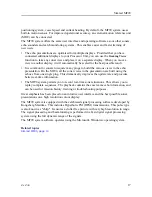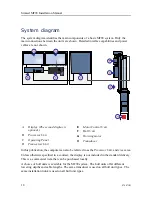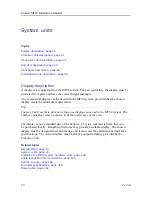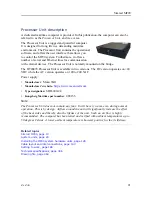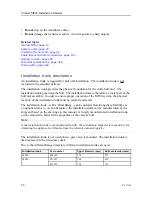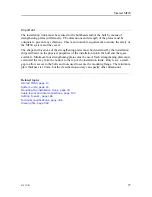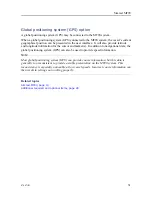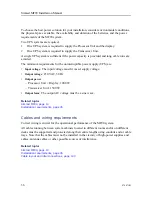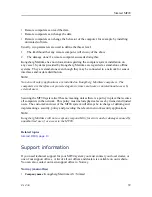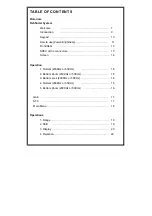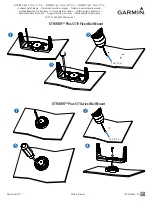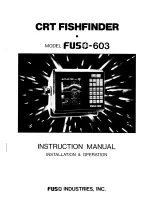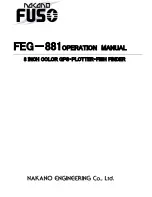
476671/B
25
Transducer description
The cylindrical transducer allows the sonar beam to provide a full 360 degrees coverage of
the water volume.
The transducer converts the electric energy generated by the transmitter circuitry to physical
vibrations. These vibrations alter the water pressure, and create an acoustic pulse that is
sent into the water. The acoustic signal is transmitted as a beam. The duration of the
acoustic pulse, as well as its frequency and shape, are controlled by the system software.
The direction and opening angle of the beam is controlled by the transmitter circuitry and
the physical properties of the transducer. After the transmission, the transducer works as
a "microphone". It converts the water pressure created by the acoustic echoes to electric
energy. These weak echo signals are sent to the amplifiers in the receiver circuitry.
Note
The transducer is covered with a thick red or black protective coating made of a special
plastic type. The protective coating is a vital part of the transducer. It is very important
that neither this coating nor the internal parts of the transducer are damaged during the
handling, installation or cleaning. Any holes and/or scratches in the transducer surface will
allow water to penetrate the transducer. If a leak occurs, the transducer must be replaced.
A
Lower part of transducer shaft
B
Transducer with its red protective coating
The transducer is mounted at the bottom end of the hull unit’s transducer
shaft. This allows the transducer to be lowered into the water for operational
use, and retracted for protection when the MF90 system is turned off. By
lowering the transducer into the water, you may also be able to reduce the
noise created by the laminar flow of water along the hull.
The transducer contains 480 individual elements.
Rules for transducer handling
A transducer must always be handled as a delicate instrument. Incorrect actions may
damage the transducer beyond repair. A physical blow to the transducer face may easily
damage one or more elements. Observe these transducer handling rules:
•
Do not
activate the transducer when it is out of the water.
•
Do not
handle the transducer roughly. Avoid impacts.
•
Do not
expose the transducer to direct sunlight or excessive heat.
•
Do not
use high-pressure water, sandblasting, metal tools or strong solvents to clean
the transducer.
•
Do not
damage the outer protective skin of the transducer.
Summary of Contents for Simrad MF90
Page 1: ...kongsberg com simrad Simrad MF90 INSTALLATION MANUAL...
Page 2: ......
Page 21: ...476671 B 19 Related topics Simrad MF90 page 13 Simrad MF90...
Page 369: ...476671 B 367 Drawing file...
Page 372: ...370 476671 B Simrad MF90 Installation Manual...
Page 375: ...476671 B 373 Drawing file...
Page 378: ...376 476671 B Simrad MF90 Installation Manual...
Page 384: ...382 476671 B Simrad MF90 Installation Manual...
Page 387: ...476671 B 385 Drawing file...
Page 390: ...388 476671 B Simrad MF90 Installation Manual...
Page 393: ...476671 B 391 Drawing file...
Page 398: ...396 476671 B Simrad MF90 Installation Manual...
Page 421: ......
Page 422: ...2022 Kongsberg Maritime ISBN 978 82 8066 240 8...
Page 423: ......
Page 425: ......
Page 426: ...Installation Manual Simrad MF90...







